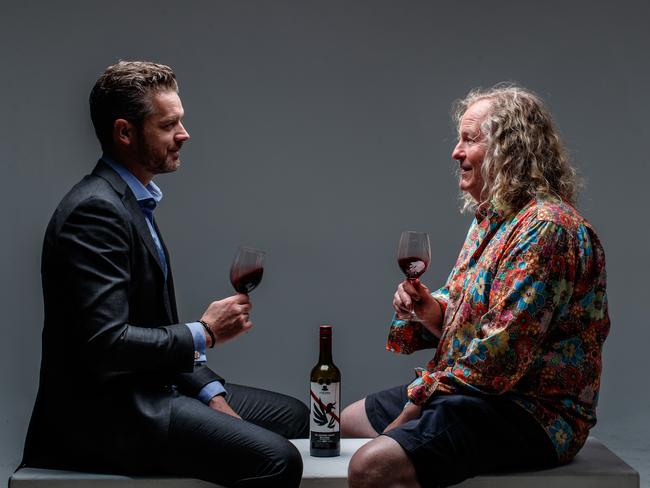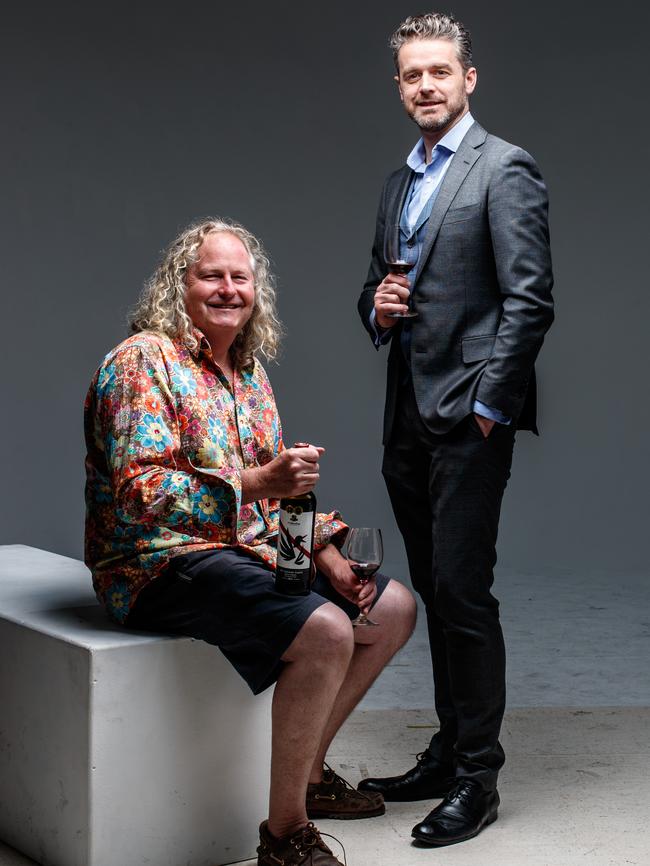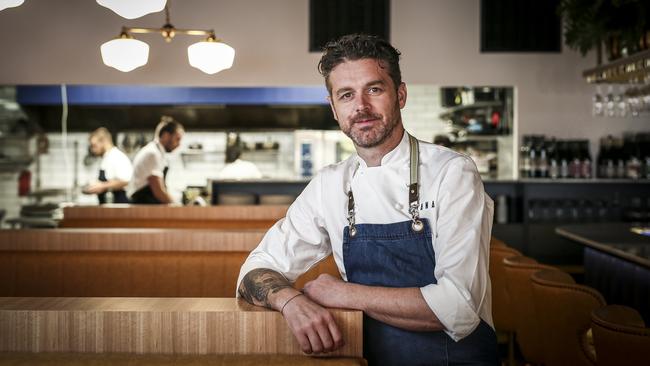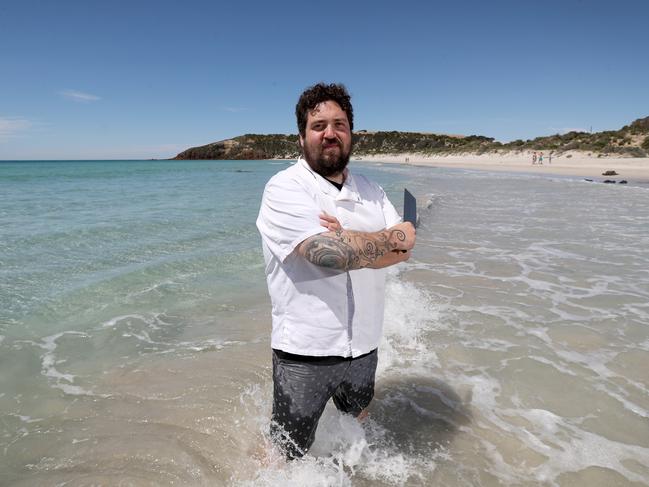Why the rest of the country – and the world – has fallen for South Australia’s food and wine
SOUTH Australia is back on the must-visit list for the country’s food lovers thanks to its relaxed dining culture and regional gems.

SA Weekend
Don't miss out on the headlines from SA Weekend. Followed categories will be added to My News.
SITTING languidly in the autumn sunshine, a glass of pristine Hills chardonnay in hand, the pleasure of a marvellous meal still vivid, it’s easy to reflect with some smugness on the progress of our gastronomic affairs.
SA Great. The Food and Wine State. From Burnside to the Barossa. A golden age. Why would you want to live anywhere else?
It’s a message that our government and tourism leaders are pushing hard. Food and wine, after all, have been shown to be among the most important factors in determining where international travellers head. And those that do come to Australia are spending big on eating and drinking – $5.8 billion in 2017, double what it was in 2006.
However, to properly gauge how South Australia’s culinary standing is seen elsewhere in the country – and the world – it is necessary to step beyond our own self-satisfied viewpoint and observe what less biased outsiders might think.

The evidence, while not exactly scientific, all points to the same conclusion. SA is having a moment. SA is on the must-visit list. SA is indeed cool. How else can you explain the fascination that has seen one Adelaide chef, Jock Zonfrillo of Restaurant Orana, appearing on the cover of the food lift outs in Melbourne and Sydney earlier this year?
That same chef being named the hottest in the country in a rival publication and then his restaurant number one in a highly regarded list of 100 establishments nationwide?
Or little Africola, written up everywhere for its boundary-breaking food and merry-making, while its owner Duncan Welgemoed races from festival to food gathering where his creative touch and rabble-rousing ways are in demand.

Looking further afield, the prestigious Conde Nast Traveller has just featured SA in an eight-page spread, describing Adelaide in its introduction as “one of the most exciting foodie cities in the world”. And the venerable New York Times has been to dinner in our western suburbs, falling for the humble charms of heartwarming Afghan eatery Parwana.
That momentum can only gather force, the reputation spread further over the next couple of weeks, as the state’s major food festival, Tasting Australia, kicks into gear with more than 140 events across SA. Thousands of foodies are expected to visit, along with a carefully selected guest list of food media, celebrities and influencers from key tourism markets.
The Sydney-based editor-in-chief of delicious magazine, Kerrie McCallum, is one interstater who has noticed the rise in interest. “For people who travel through the lens of food, South Australia is a hot spot now,” she says. “It has a really good mojo.
“The smaller size of Adelaide is appealing. And it doesn’t try too hard. It is comfortable to be what it is. And the people seem open to ideas, happy and buzzing.”
So where has this shift in perception come from? It’s not as though Adelaide’s natural assets in food and wine are anything new. But even five years ago, the city had nothing like the level of excitement – the “good mojo” – that exists now.
National restaurant reviewer at The Australian, John Lethlean, puts it down to a few important players – particularly those mentioned above – being instrumental in building confidence. “Certain people have been prepared to back themselves in on ideas that were not necessarily commercially driven, and they’ve worked,” he says.
“I think the emergence of a few key personalities from the cooking world has made a huge difference. Welgemoed and Zonfrillo are both articulate, worldly big thinkers who have a really impressive love of the place.”
To this list he adds entrepreneur Simon Kardachi and his talent for matching different talents to ventures such as Osteria Oggi, Shobosho and The Pot by Emma McCaskill.

Welgemoed, a South African who is at the centre of his own network of freethinkers, has seen the shift first-hand. “With that new-found confidence in the underbelly of the food/art/music scene, young people decided to stay rather than head to the eastern states,” he says. “That gave us young entrepreneurs and hospitality workers that revived the scene again. We didn’t have the same brain drain.”
The State Government and Adelaide City Council, working in simpatico for once, deserve some credit. Changes in licensing rules allowed small bars to flourish. Red tape was trimmed. Abandoned laneways and basements were revived, with rent relief meaning bright ideas could be explored free of crushing debt.
Welgemoed also reckons the Adelaide dining public deserves some praise. “We have our own SA style now, the way we do things, the way we serve people, and people have embraced that over the past couple of years,” he says. “Sydney and Melbourne are on trend but it becomes boring and predictable after a while. We don’t really jump on trends here. It allows us to take a lot more risks – we’ve done some mental things that work (and a few that haven’t). I think our audience is brave … and likes to eat and drink well across the board.” Those risks include Welgemoed’s decision to revamp the first iteration of Africola, a restaurant that was already doing remarkably well when focused on the fire-pit-cooking and shanty bar tradition of the chef’s upbringing in Johannesburg. The cross-continent switch to northern Africa, with more vegetables, grains and a wider spice repertoire, has proved a masterstroke, however.
Talking bold moves, how about Zonfrillo’s shift away from the stewardship of Penfolds’ Magill Estate to open the pioneering Orana, where he could fully realise his concept of a true Australian eating experience based around native ingredients, many of them new to western palates.
The small and modestly appointed eatery, accessed up a fire escape in an alleyway, now sits at the top of the charts, with all the accolades listed earlier, as well as twice being named The Advertiser Restaurant of the Year.
It is also on the radar of the band of influential international diners who select the World’s Best 50 Restaurants, particularly since the awards ceremony came to Australia last year. The 2018 list, revealed in Spain in June, should make interesting reading.
Zonfrillo, who travels regularly to international festivals and symposiums, acknowledges the importance of establishing a global reputation to increase recognition at home. “Over the years our restaurants have started to have a national voice, not just a local voice, and this has attracted more attention. With Orana, we spoke about the restaurant outside the country, to get attention in Australia. I think that has played a huge part in changing the perception of Adelaide, even within itself.
“It has taken time for people to realise that there are people in Adelaide who love great food and they will come if you do something good. Ten years ago the talent pool came and went from Adelaide. I’ve heard of chefs that came here and left because the restaurants weren’t busy or the population wasn’t big enough. There was always a reason.”
For Zonfrillo, a Scotsman who had been working in Sydney, Adelaide was “a city with a heap of possibilities” when he moved here 10 years ago. As a chef, he was attracted by the produce, especially the seafood, which he had been using after it had travelled interstate and still found “amazing”. “But when you get it first-hand down here it is so much better.”
And he sees the size of Adelaide as an advantage, both in its liveability and the connections it encourages. “Adelaide has soul and the sense of a city as a whole,” he says. “The feeling of a community as a city that you don’t get somewhere like Sydney. We’re not a small country town. It’s a good-sized city – considerably larger than Copenhagen. There are enough diners here to support a good breadth of restaurants.”
The proximity of the wine regions that embrace Adelaide on three sides help create another important network. Restaurateurs and chefs can easily make daytrips to producers in the Adelaide Hills, McLaren Vale and Barossa. And the reverse is also true.
“Everywhere you go out to eat, you will see a handful of winemakers having a couple of drinks and talking to people,” says Zonfrillo.
Lethlean sees the bond between our food and wine creators as one of Adelaide’s great advantages. “I think you handle the intersection of food and wine really well, because there is such cultural cross-pollination between the industries, particularly the mavericks of the wine scene and those who play with food. The overlap is growing all the time.”

He cites The Summertown Aristologist, a Hills establishment owned by a pair of winemakers whose own hands-on, minimal-intervention philosophy is reflected by a kitchen team that not only bakes its own bread but also mills the flour. Unsurprisingly, the flavours in bowl and glass are made for each other.
“Ferments and acids and brines and indigenous ingredients all seem inextricably linked with non-mainstream winemaking,” Lethlean reflects. “They all listen to each other, which is not unhealthy.”
At the other end of the scale in winery restaurants is The Cube at d’Arenberg. Chester Osborn’s phantasmagorical blend of gallery, cellar door and fine diner is clearly pitched at a different audience but has instantly brought an influx of visitors from near and afar to the McLaren Vale region. Here diners can be wowed by some of the most intricate, technique-based cooking around, a match for the ambition of the glass box setting.
Still, Lethlean maintains that this isn’t SA’s strongpoint. “Personally, I think Adelaide should obsess less about culinary innovation and focus on that nexus between the wine producing districts so close to the city, and the amazing accessibility chefs have to growers and producers,” he says.
MasterChef judge and columnist Matt Preston, a regular visitor, agrees.
“Historically, cities will set their stand out based on their high-end dining and it is always going to be hard for a city like Adelaide to compete. But that weakness is Adelaide’s strength,” he says.
“Over the last five years there has been an explosion of well-priced, delicious places to eat. There is much more richness and depth to what you have. Everything is a lot looser and the emphasis is on good times and great food rather than stuffy old-school dining. It makes Adelaide a very fun place to visit.”
Zonfrillo is confident the good times are here to last, that what Adelaide has built up has a solid foundation.
“The nice thing is it isn’t forced,” he says. “Where we have come in the last 10 years is quite organic. And that makes it sustainable. What we need to look for now is some of the chefs to come out of our kitchens, become head chefs and follow their own ideas.”
Tasting Australia, until April 22, tastingaustralia.com.au



